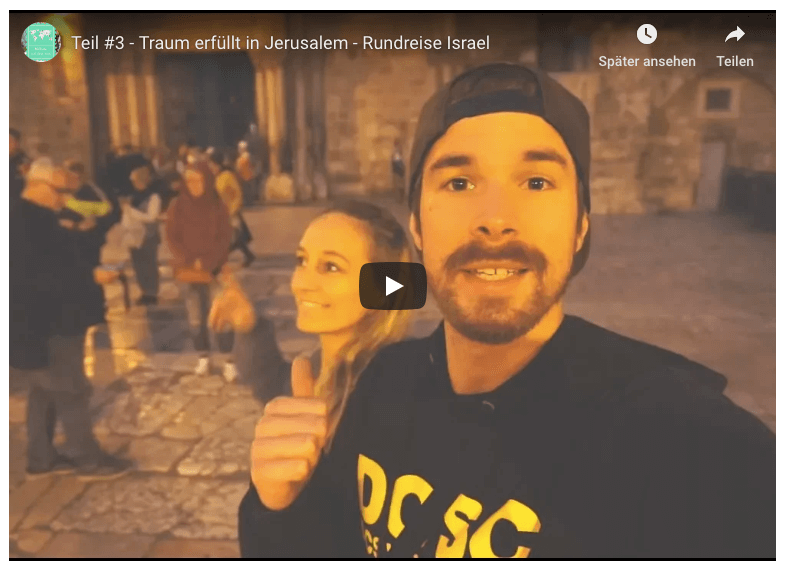Would you like to learn more about the highlights in Jerusalem? Then the following article is sure to be a good source of inspiration for you. Jerusalem! It always seemed so far away to us, such a different world with so much magic and uniqueness. And suddenly we were in the middle of it! We looked at each other and realized we were really standing in Jerusalem. In the city we only knew from books, documentaries, the news, and videos.
With this city trip, we fulfilled a huge dream. Initially, we wanted to skip this stop on our Israel tour because there was some unrest in the country at the time due to Donald Trump’s statements. But we decided to visit the city and, above all, explore it. In today’s article, we’ll tell you our top highlights in Jerusalem.
What else you should know:
- Best time to travel to Israel
- Currency & Money Israel
- Driving in Israel
- Drone flying & Laws
- Entry & Israel Visa
- Safety in Israel
- Costs of a trip to Israel
- Reasons for a trip to Israel
- Tel Aviv Highlights & Tips
- Our round trip through Israel
- What else you should know:
- 1. Getting to Jerusalem
- 2. Booking accommodation
- 3. Highlights in Jerusalem – Old City
- 4. To the Temple Mount
- 5. Tour of the City Walls
- 6. Visiting the Mount of Olives
- 7. Museums in Jerusalem
- 8. The colorful Mahane Yehuda Market
- 9. Excursions from Jerusalem
1. Getting to Jerusalem
As you’ve already read, we drove through Israel in a rental car. We originally wanted to take the buses, but then didn’t have enough time to rely on them. So we took our fate into our own hands and got a car in Eilat. We found a bargain at www.billiger-mietwagen.de. For 7 days, we paid only €130, including all essential services (no deductible, fully comprehensive insurance, and a fair full/full fuel policy).
From Tel Aviv, you can also travel comfortably by bus. The journey only takes around 40 minutes and costs maybe €5 or €6. Buses depart every 15 minutes from morning to evening from Tel Aviv Central Station. Keep in mind, however, that public transport does not run on Shabbat (Friday evening to Saturday evening).
You can find the schedule and prices here: Egged Busse Israel. Taxis and private shuttles are, of course, much more expensive. However, we highly recommend the buses; they are very comfortable and clean (we took them back to Eilat/Ovda Airport).
The nearest airport is in Tel Aviv. Some airlines fly directly from German cities, others with a stopover in places like Istanbul. Ryanair also flies directly from Karlsruhe, and usually very cheaply. We flew from Berlin to Eilat/Ovda and would do it again. Also important is the topic: Entry into Israel & Visa.
2. Booking Accommodation
We originally wanted to couch surf, but couldn’t find anything. So we booked a room with Airbnb again. This time we ended up in a shared apartment in the middle of a cool neighborhood in Jerusalem. In Jerusalem, you can find almost anything, from hostels to luxury rooms or even a simple couch with students. Our room was simple but adequate, and the shared apartment was home to cool people and a super cute dog.
We love exchanging ideas with others, so Airbnb is often the best way for us to meet locals in to make contact. The flatmates were great, and we spent the evenings together on the terrace, having great conversations. Since it was Hanukkah at that time, we just managed to find a fairly affordable room (€27 per night). It’s best to book your room in advance or try one of the hostels on the spot.
- Abraham Hostel Jerusalem* (from €20 per night in a shared room)
- Mike’s House* (from €60 per night in a double room)
- The Post Hostel* (from €25 per night in a shared room)
- Hebron Youth Hostel* (from €10 per night in a shared room)
- Hi Agron Hostel* (from €28 per night in a shared room)
We recommend you take accommodation in the west of the city. It’s obviously really expensive in the Old Town, and in In East Jerusalem, you should inform yourself about the political situation beforehand. We found the west to be very safe and really cool. Our area in Beit Ya’Akov was particularly great. We were only in Jerusalem for 2 nights, but would have liked to stay longer. You should plan at least 2 full days if you want to see a bit more.
3. Highlights in Jerusalem – Old City
We naturally began our tour in the unique and beautiful Old City. There are simply countless highlights here, such as the Western Wall, the Temple Mount, many churches and mosques, museums, and other historical buildings. To get an initial overview, we took a free walking tour.
These depart every day at 11 a.m. and 2 p.m. from the Jaffa Gate. During this tour, you’ll get great background information on the different districts of the Old City and can get a first impression. The tour lasted 2 hours, and you should tip the guide appropriately at the end. After the tour, we’ll be on our own. once again through the Old City.
In total, we spent 8 hours walking in the Old City that day, even though it’s really not that big. However, you do get lost every now and then through the many small alleys and passageways. We enjoyed going with the flow and exploring each district on our own. The Muslim Quarter is just as different as the Christian, Jewish, or Armenian quarters. You’ll quickly notice the differences and eventually find your way around.
The Armenian Quarter
We started our tour in the Armenian Quarter. This is located in the southwest corner of the Old City and is best reached via Jaffa Gate or Zion Gate. Around 10 years ago, just under 2,400 people lived there, probably the smallest population group of all four quarters. The Armenian Quarter is also home to St. James’s Cathedral, the headquarters of the Armenian Patriarchate of Jerusalem.
The Armenians living in this quarter have cultivated traditions for centuries and have never given up their identity. Our guide so beautifully said: “When you stroll through the quarter, you’ll immediately notice that there are no markets, souvenir shops, or stores here. The Armenians are a quiet people, and therefore have little interest in tourists and their money. They live here in the small alleys and have little interest in the hustle and bustle every day.”
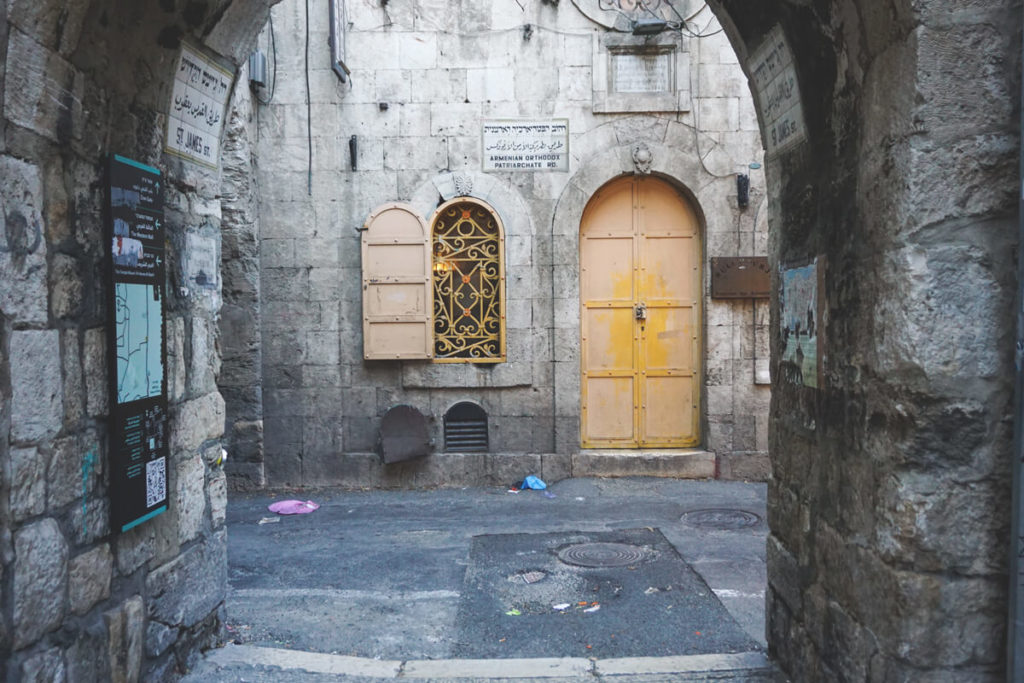
And that’s exactly what you feel in this area of the Old City – it seems almost deserted. The Armenians identify neither with the Israelis nor with the Palestinians. They are simply themselves, a minority that has always remained neutral. They don’t see themselves as part of the conflict between the two sides. And this is precisely why the Armenians are so important to the beautiful Old Town.
The Muslim Quarter
Things are quite different in the Muslim Quarter. Here, you’ll experience a completely unique charm. It is the largest quarter of the Old Town, bordered to the north and east by the city walls (population 22,000). In the south, the quarter extends to Tariq Bab el Silsila Street and in the west to Khan el Zeit. From the 12th century onwards, Arab settlers came to this part of the city after the Jews were expelled.
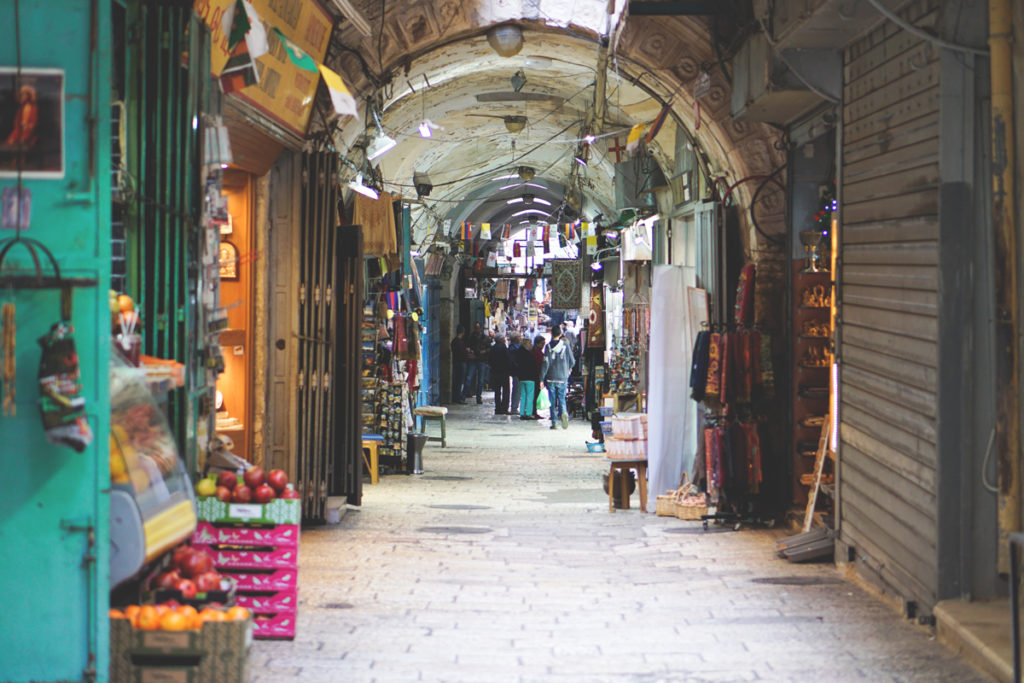
The houses in the souks (towards Chain Street) are colorful and much more simply constructed than, for example, the houses in the Jewish Quarter. There is also great poverty among the Muslim residents in this part of the Old City. But you’ll see it with your own eyes as you stroll through the alleys.
Despite everything, the district is beautiful and incredibly oriental. At the bazaar in front of the Damascus Gate, you can buy inexpensive baked goods, traditional dishes, fresh fruit and vegetables, as well as tea, coffee, and, of course, hummus and falafel. So if you’re looking for cheap food, you’ll find it there.

Other sights: Via Dolorosa, St. Anne’s Church, Pool of Bethesda, Franciscan Chapel of the Flagellation, Chapel of the Condemnation, Esse Homo Basilica, St. Stephen’s Gate, Damascus Gate, Herod’s Gate, Convent of the Sisters of Sion, Austrian Pilgrims’ Hospice, Antonia Castle, and much more.
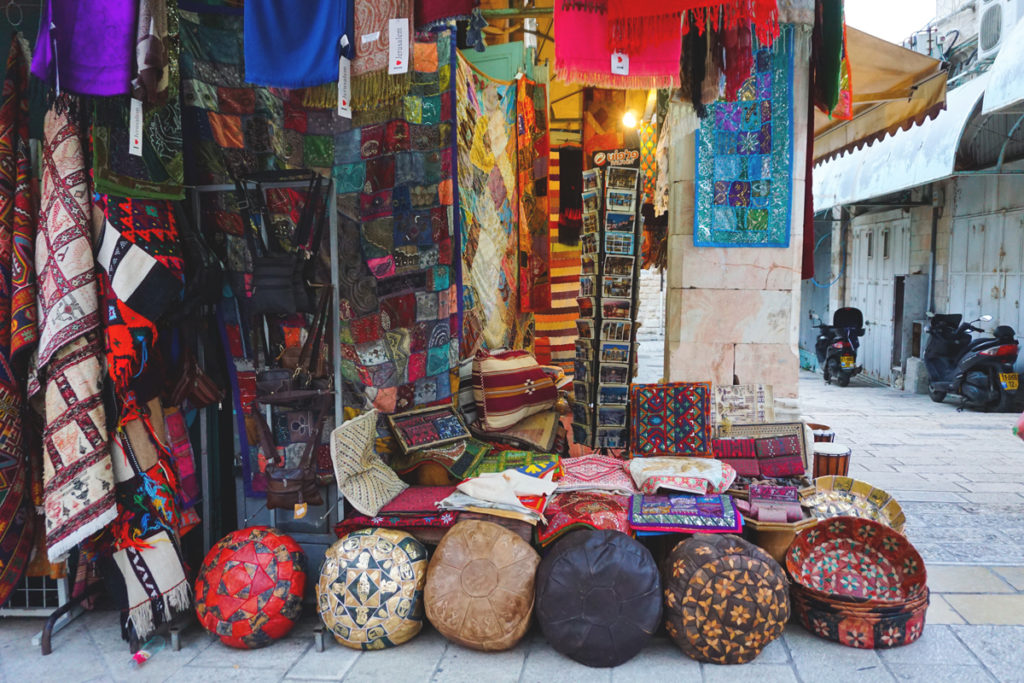
The Jewish Quarter
One of the most exciting regions of the Old City is certainly the Jewish Quarter. Here, you can see the contrast to all other quarters particularly clearly, as the houses are all very new and partly modern. A large part of the quarter was only rebuilt and renovated after the War of Independence. However, much also dates back to Roman times and the 19th century.
Around 600 Jewish families live in this part of the Old City. And among all of them, you’ll discover charming cafés, a few galleries, as well as restaurants and shops (especially around Hurva Square). Stroll through the Cardo, a former main street from the Roman-Byzantine period. There’s a fantastic exhibition with beautiful photographs here.
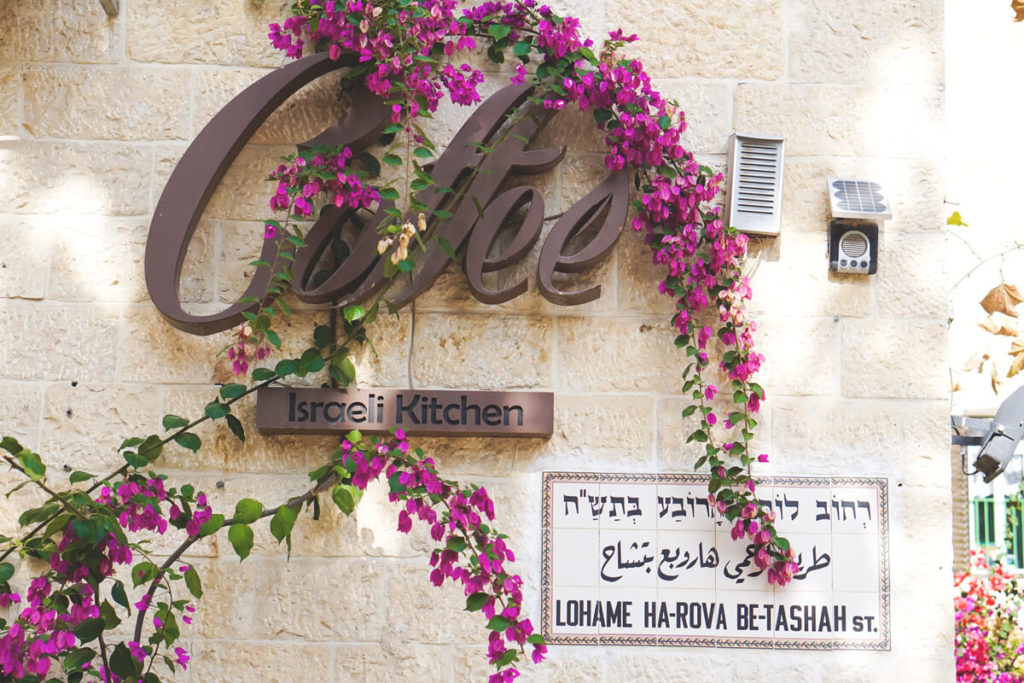
You should, of course, make a detour to the Western Wall. The wall is one of the many extremely religious sites in the city and should not be missed on your trip. Judaism’s holiest site looks back on a truly long and, above all, eventful history. The Western Wall once represented the Western Wall of the Second Temple in Jerusalem, which was unfortunately destroyed. But the wall held firm and is even more important for the Jews today. For them, it was a place where God comes to the believers.
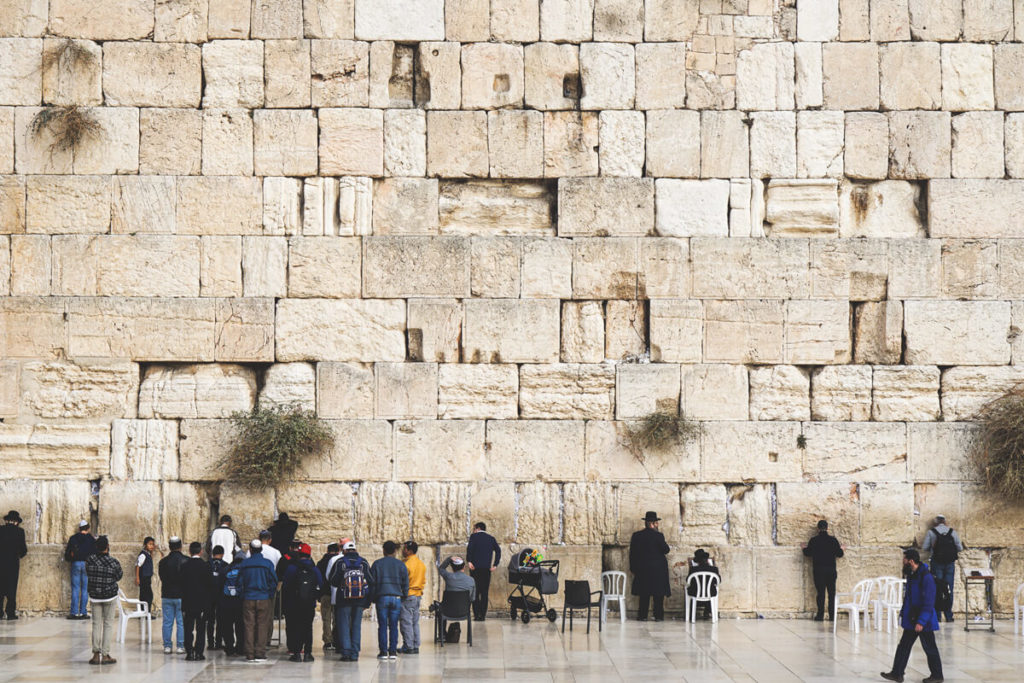
Experience the Wailing Wall
A ritual you’ll discover at the Wailing Wall: Small notes with prayers or wishes are placed in the cracks in the wall. According to belief, God collects these notes. Twice a year, these notes are actually collected and buried on the Mount of Olives. The reason for this: Due to the wall’s fame, a huge number of notes are placed in the wall.
So twice a year, space has to be made for new ones. You, too, can place your note in the wall. Men and women, however, do this separately. But you’ll see it once you get there. You’ll also receive a free white kippah at the entrance; your clothing should be appropriate (no bare shoulders or legs, no low-cut tops). You can go to the Western Wall 24/7. Admission is free.
Before entering the square, you’ll be checked via a metal detector for general security. Don’t be surprised by the large police and military presence. That’s just part of Israel. Nevertheless, we didn’t notice any unrest in the Old City.
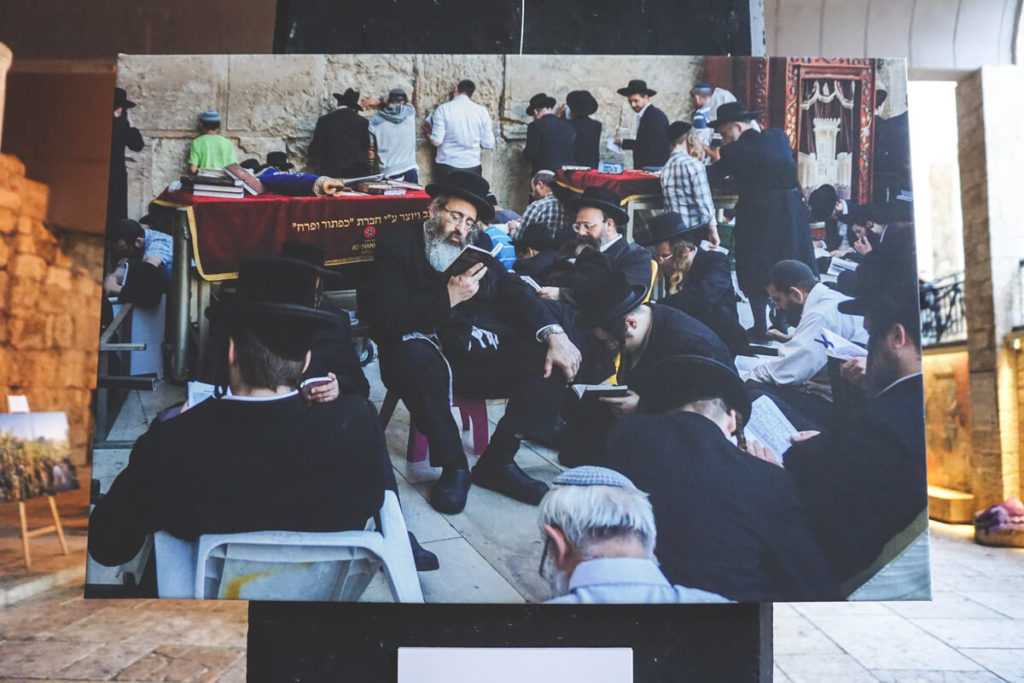
Afterwards, we wanted to visit the Wailing Wall Tunnel, but then we ran out of time. The tunnel is about 480 meters long and shows the origins of Jerusalem. The tour costs €7 and lasts about 70 minutes. For us, the trip to the Western Wall was a truly magical moment and a very special experience. Everything was somehow so mystical and magical. For minutes we just stood there, looking left and right, realizing once again what a fascinating world we actually live in.
Special Info: Outside the Old City is probably the most curious quarter of the city – Mea Shearim. As soon as you enter, you feel transported back to the 18th century. This is where the ultra-Orthodox Jews live, who have only minimal contact with the outside world. Their clothing, behavior, and habits are strictly conservative. As a visitor, you should respect this and behave sensibly. Groups are not welcome there, however.
The Christian Quarter
The Christian Quarter of Jerusalem is located in the northwest corner of the Old City and borders the other three quarters. 40 of the holy sites in Christianity are located here alone – crazy, right? Although the quarter is significantly smaller than the Muslim Quarter, there are still an incredible number of beautiful places to discover here. You’ll find most shops on Market Street or David Street.

A real highlight in Jerusalem is definitely the Church of the Holy Sepulchre. It is located in the heart of the Christian Quarter in Jerusalem’s Old City and is considered one of the holiest sites in the Christian world. Jesus is said to have been crucified and buried here, and resurrected after three days. It’s no wonder everyone makes pilgrimages to this place. From the outside, the church appears somewhat inconspicuous, but true treasures are hidden inside.
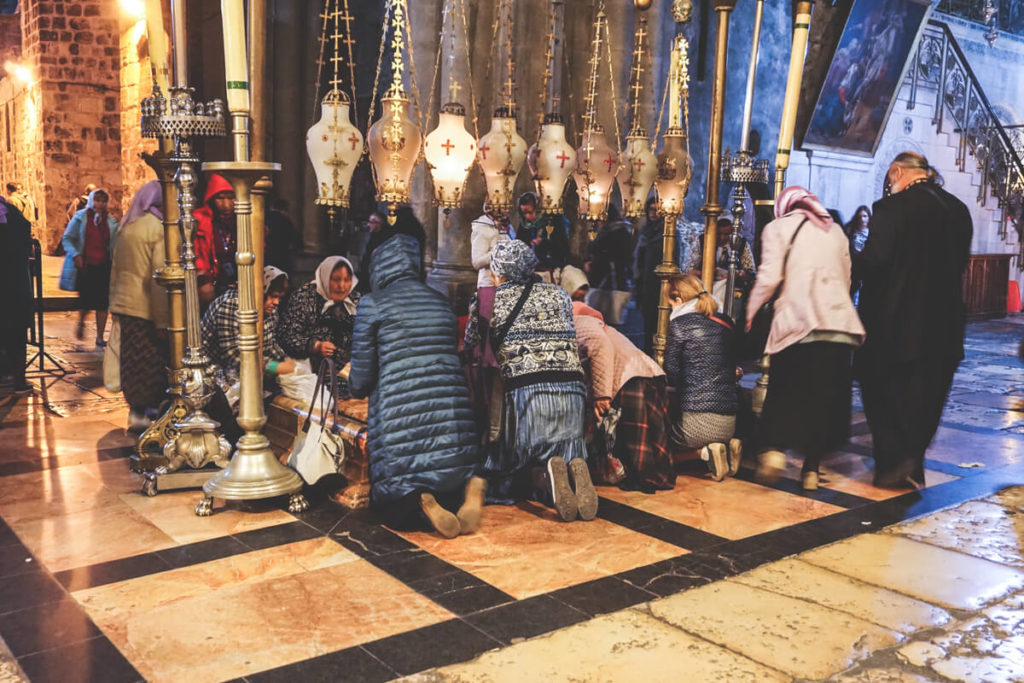
The Church of the Holy Sepulchre houses numerous chapels and shrines. It is almost 1,700 years old and is one of the world’s great shrines. It contains, among other things, the anointing stone of Jesus Christ, the tomb of Jesus, and the rock of Golgotha, where Jesus died. It can get very crowded during peak times, so it’s best to come in the early evening or early morning. Admission is free. From April to September, the church is open between 5 a.m. and 9 p.m. From October to March, you can visit the church between 4 a.m. and 7 p.m.
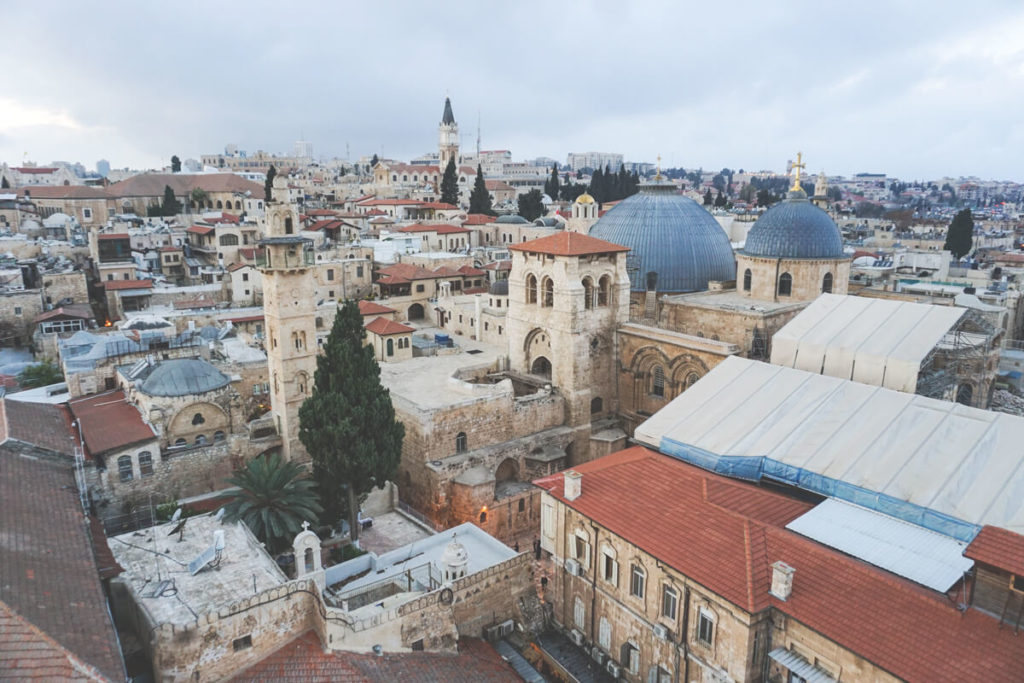
Another highlight presented itself when we climbed the tower of the Church of the Redeemer. The church and tower were actually already closed, but the friendly gentleman at the reception desk let us in anyway. The German-Evangelical church is located immediately south of the Church of the Holy Sepulchre, right in the center of Jerusalem’s Old City.
Beautiful views of the city
From the tower, you have a wonderful view of the entire Old City and the surrounding area. The church is open Monday to Saturday from 10 a.m. to 5 p.m.; it is closed on Sundays. Admission is generally free, but climbing the church tower and visiting the archaeological park costs 15 shekels (€3.60).
Another tip: From the roof of the Austrian Hospice, you’re supposed to have a magnificent view of the city. At least, it was recommended to us several times. Unfortunately, we didn’t make it, but maybe you can.

Other highlights: the Church of St. John the Baptist, the Muristan, the Citadel, the Salvator Monastery, and the Latin, Greek Orthodox, and Greek Catholic Patriarchates. By the way: Since December 2017, the colorful Santa Claus House has been located in the Christian Quarter during the Christmas season. We were there and visited Santa Claus. It’s a wonderful experience, especially for children. And if you ever want to send a letter to Santa Claus, you’ll find the cute mailbox in front of the entrance.
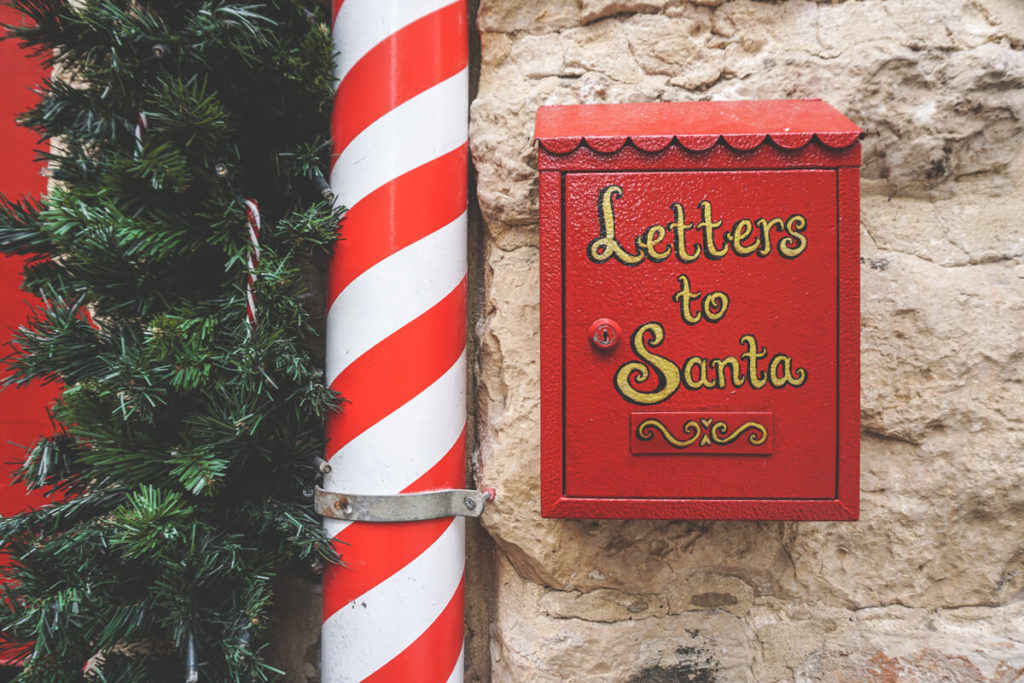
4. Off to the Temple Mount
The Temple Mount is located in the southeastern part of the Old City, directly behind the Western Wall. It is considered the third holiest site in Islam after Mecca and Medina. According to legend, the Prophet Muhammad is said to have made his night journey to the “farthest mosques” from here. Originally, the Jerusalem Temple, or Solomon’s Temple, and the subsequent Herodian Temple were located on the hill. On the southern side of the mountain is the beautiful al-Aqsa Mosque, the third most important mosque in Islam. The Temple Mount is also home to the Dome of the Rock. This is a shrine, a protective structure over the Holy Site. The octagonal building has a diameter of around 55 meters. In the center of the Dome of the Rock, you can see a flat roof with a golden dome, which you can even see from the tower of the Church of the Redeemer. It is probably the most photographed landmark in Jerusalem.
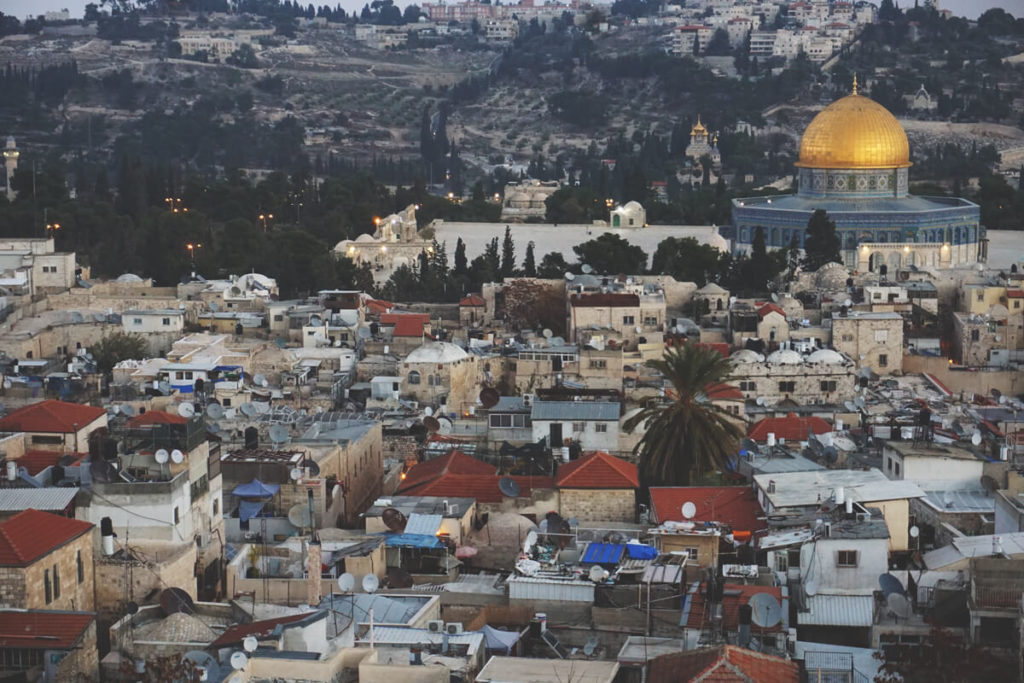
IMPORTANT INFO:
Today, only Muslims have unrestricted access to the Temple Mount. Outside of prayer times, however, you can visit the Temple Mount from Sunday to Thursday. However, this access is only permitted at very specific times: 7:30 a.m. to 11 a.m. and 1:30 p.m. to 2:30 p.m. The entrance is at the Mughrabi Gate (Moroccan Gate), which you reach via a ramp next to the Kotel.
Unfortunately, visiting the Temple Mount is not possible on public holidays and other Islamic observances. You should arrive as early as possible, as security checks can take a long time. Also, remember to wear appropriate clothing. The Al-Aqua Mosque and the Dome of the Rock are not open to non-Muslims. However, you can enjoy a beautiful view of the Old City from the Temple Mount.
5. City Wall Tour
There are some highlights in Jerusalem that not everyone knows about. This is because the path across the rooftops isn’t particularly easy to find. It starts at the corner of St. Mark’s and Khabad Streets, where the Jewish, Muslim, and Christian quarters intersect. First, you have to climb a rickety staircase to reach the rooftops of the Old City.
It’s also really cool that you can walk around the Old City on the city walls. This way, you can experience Jerusalem from a lofty height and observe the hustle and bustle from above. You can walk along the wall in two ways: from Jaffa Gate, go clockwise to St. Stephen’s Gate (1.1 km), or you can start your tour from Jaffa Gate (0.55 km) counterclockwise to Dung Gate. All other sections are not open to the public. The entrance and ticket office are located directly at Jaffa Gate (adults: 14 NIS, children: 7 NIS).
6. Visiting the Mount of Olives
East of the Temple Mount rises the Mount of Olives. This hill is more than 800 meters high and is one of the most important sites in Judaism, Christianity, and Islam. It is almost entirely covered with Jewish graves. On the slope itself, you will find churches, and on the back, you will reach the Tomb of Lazarus. From the observation deck, you have a wonderful view of Jerusalem and the Temple Mount.
7. Museums in Jerusalem
Jerusalem has a full range of museums – whether political, historical, modern, religious, or artistic. There are also numerous art markets and pop-up galleries scattered throughout the city. If you keep your eyes peeled for street art, you’ll discover interesting works of art here and there. One of the most important museums is Yad Vashem – the Holocaust Museum.
“Yad Vashem is a gateway to the Jewish world in Europe before the Holocaust, a world that no longer exists. The museum and all memorial sites are freely accessible.” A visit to Yad Vashem helps you understand Israelis, their history and heroes, their hopes and fears. Be aware, however, that you will feel a bit emotionally drained after a visit. The history is quite moving.
If you want to learn more about the history and development of Judaism, then you should visit the Israel Museum. The museum is located in the western part of the city near the Knesset and is the most important museum in the entire country. It is also one of the most renowned art and archaeology museums worldwide. Admission: Adults 48 NIS, Children 24 NIS, Students 36 NIS.
Other Museums & Galleries: Muslala, Underground Prisoner’s Museum, Ticho Hous, Barbur Gallery, Museum on the Seam, and many more. You’ll find a large selection of galleries here.
8. The Colorful Mahane Yehuda Market
Are you in the mood for a cool market? Then the Mahane Yehuda Market might be just what you’re looking for. It stretches across the many small alleys between Jaffa and Agropas Street. Here you’ll find a beautiful oriental market with fish, meat, spices, fruit, vegetables, baked goods, clothes, and much more. The food market comprises around 250 vendors on over 1,000 meters of open-air stalls, covered by a glass roof.
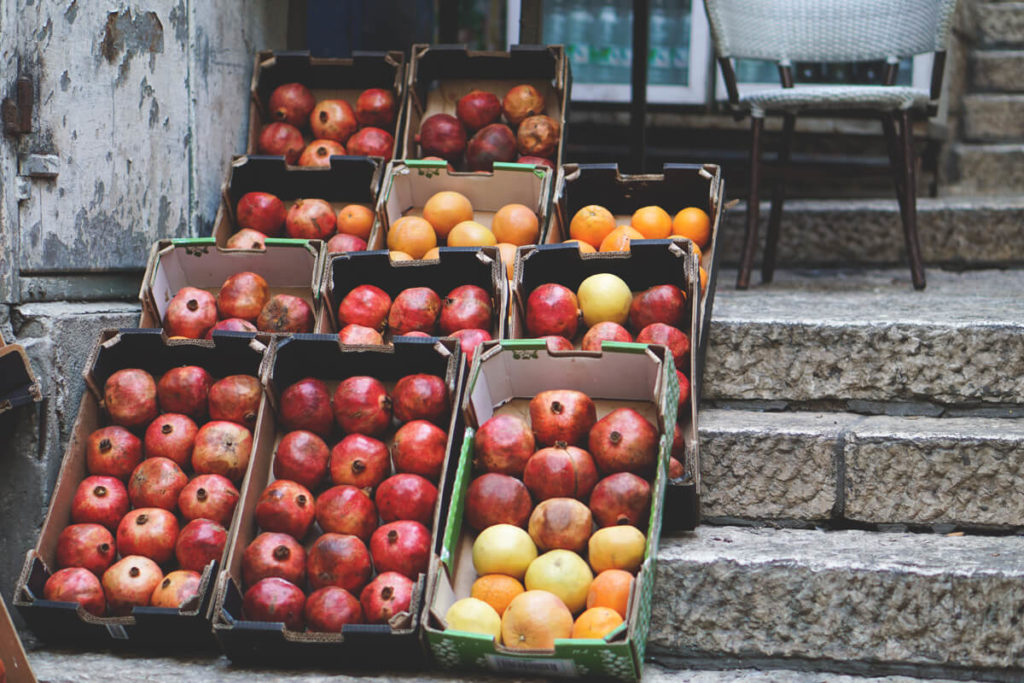
Things get particularly busy there on Fridays. Vendors vie loudly for the attention of visitors. However, it closes at 5 p.m., so you have to hurry to get the goods to the people. Shabbat begins after 5 p.m., and religious Jews are very careful to ensure that shops and stores close then.
- Opening hours: Sunday-Thursday 8 a.m.-7 p.m., Friday 8 a.m.-3 p.m., Saturday closed
- Vendors are busy setting up their wares until around 9:30 a.m. and can only serve a limited number of customers.
9. Excursions from Jerusalem
From Jerusalem, you can take great excursions into the surrounding area. Tel Aviv is only about 45 minutes by bus, so you can enjoy a relaxing day trip. Wadi Qelt Monastery is about 30 km away, and Ein Gedi on the Dead Sea is about 2 hours away. Sunrise tours to Masada also start from Jerusalem. You can book this tour for around €30 to €40 per person.
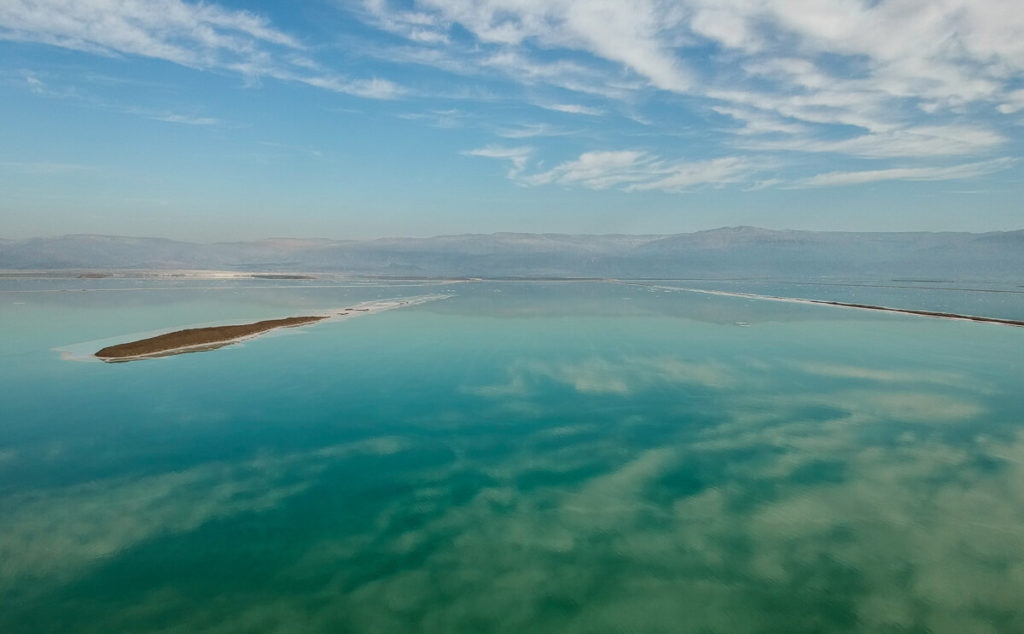
From there, you can go to En Gedi National Park and En Bokek to float in the Dead Sea. Bethlehem is only 8 km from Jerusalem, but you should check the current political situation beforehand. This is also true if you want to go to the West Bank. If you have more time, you can reach the north of Israel – Tiberias (Sea of Galilee) – within 2 hours.
